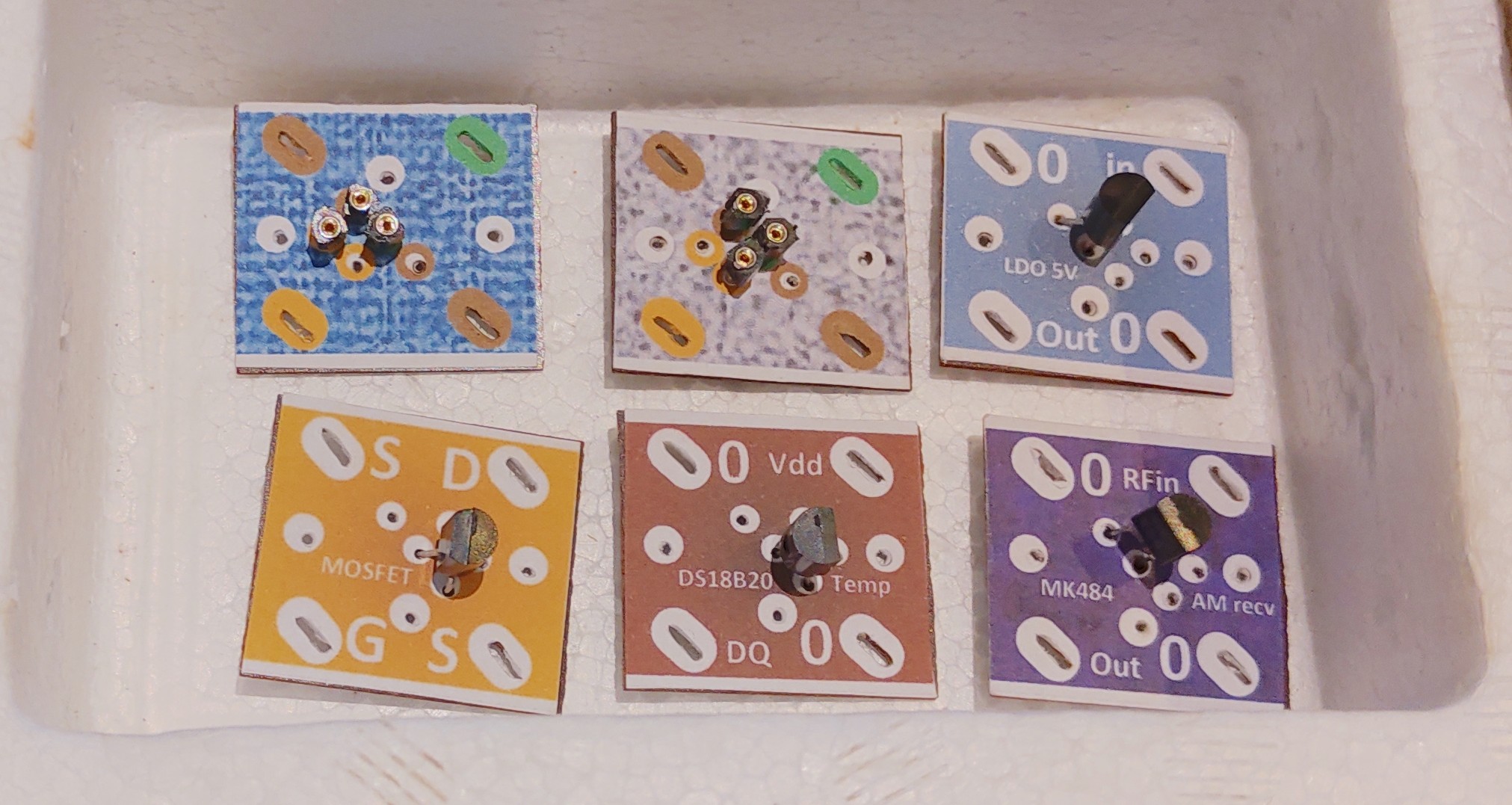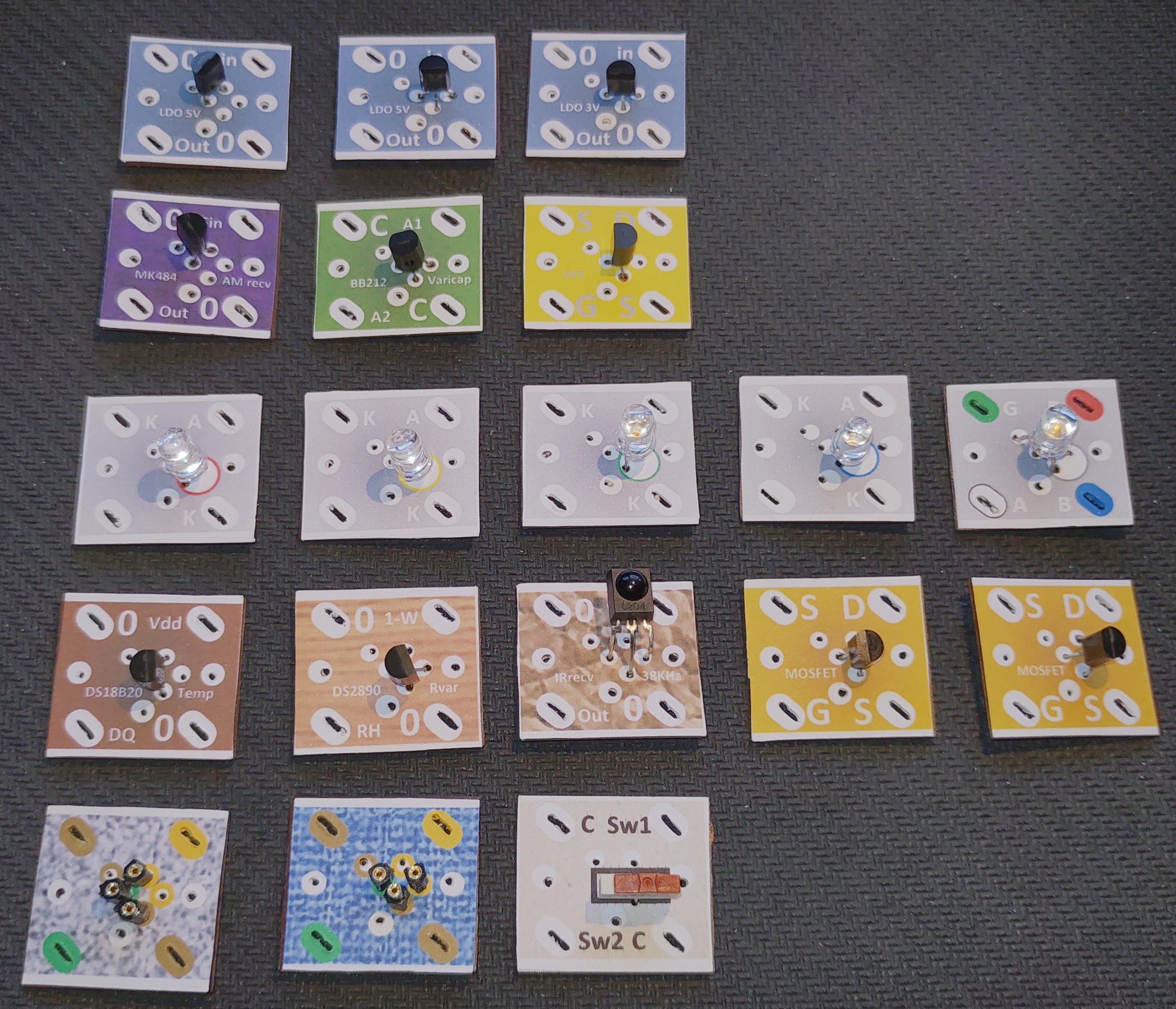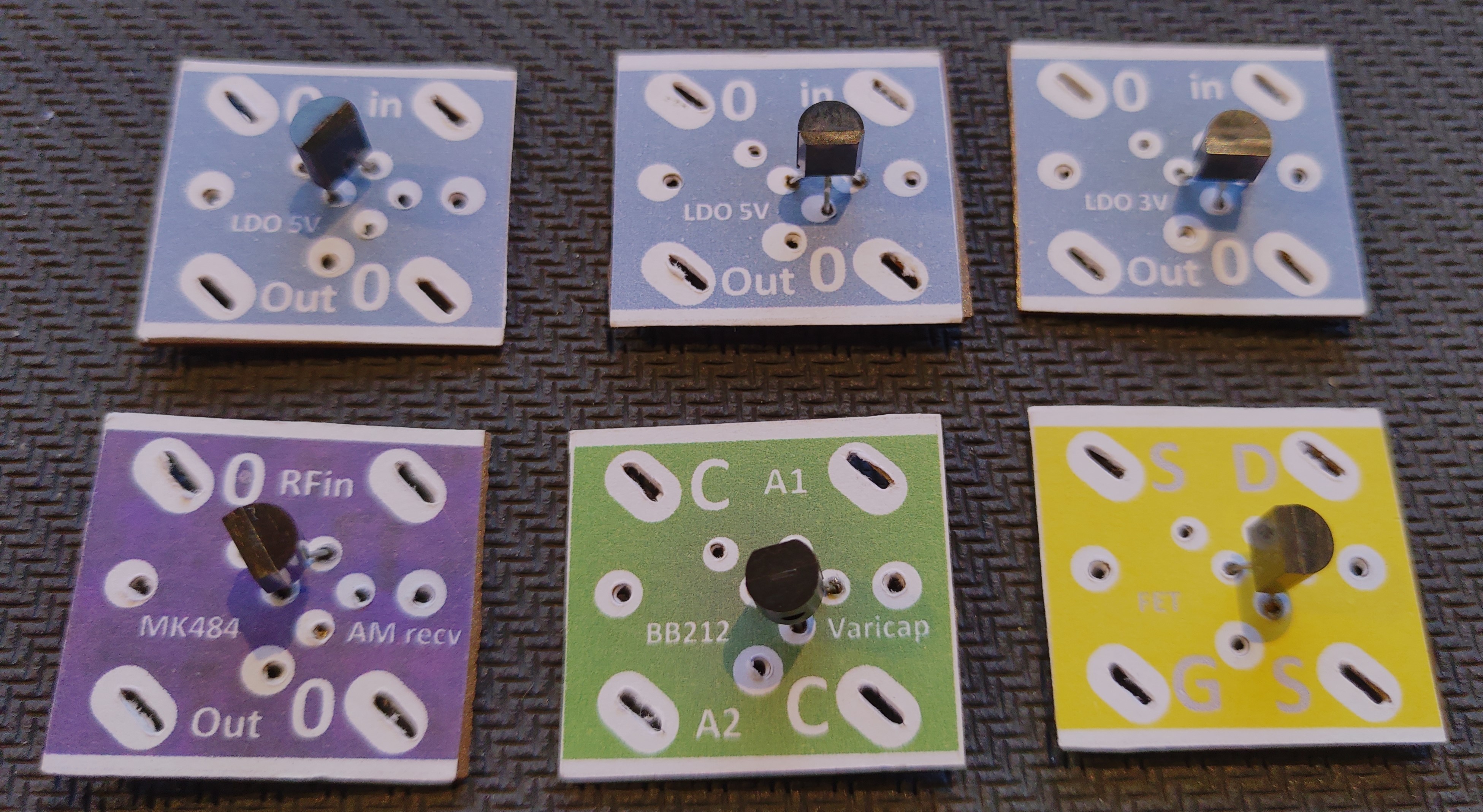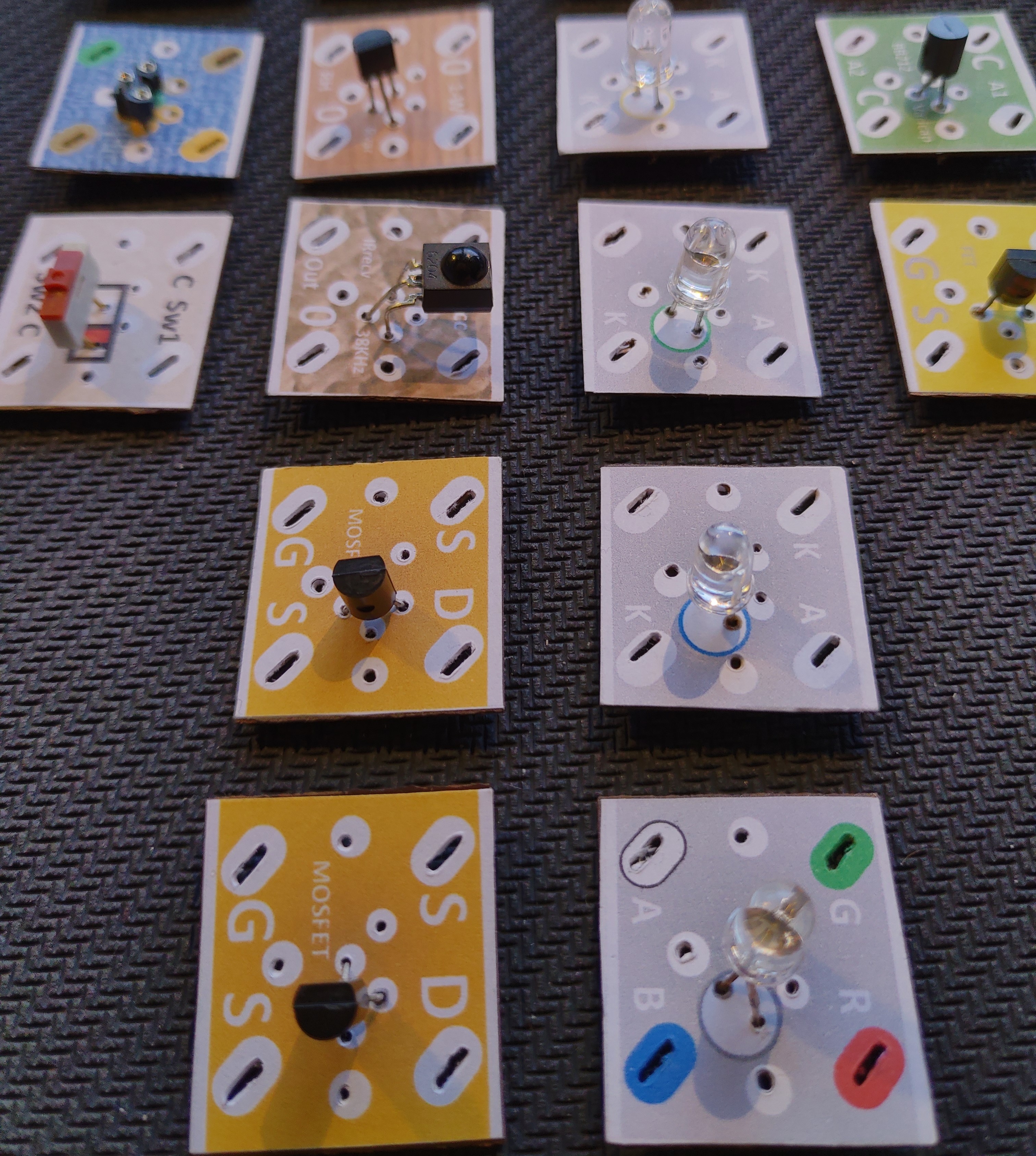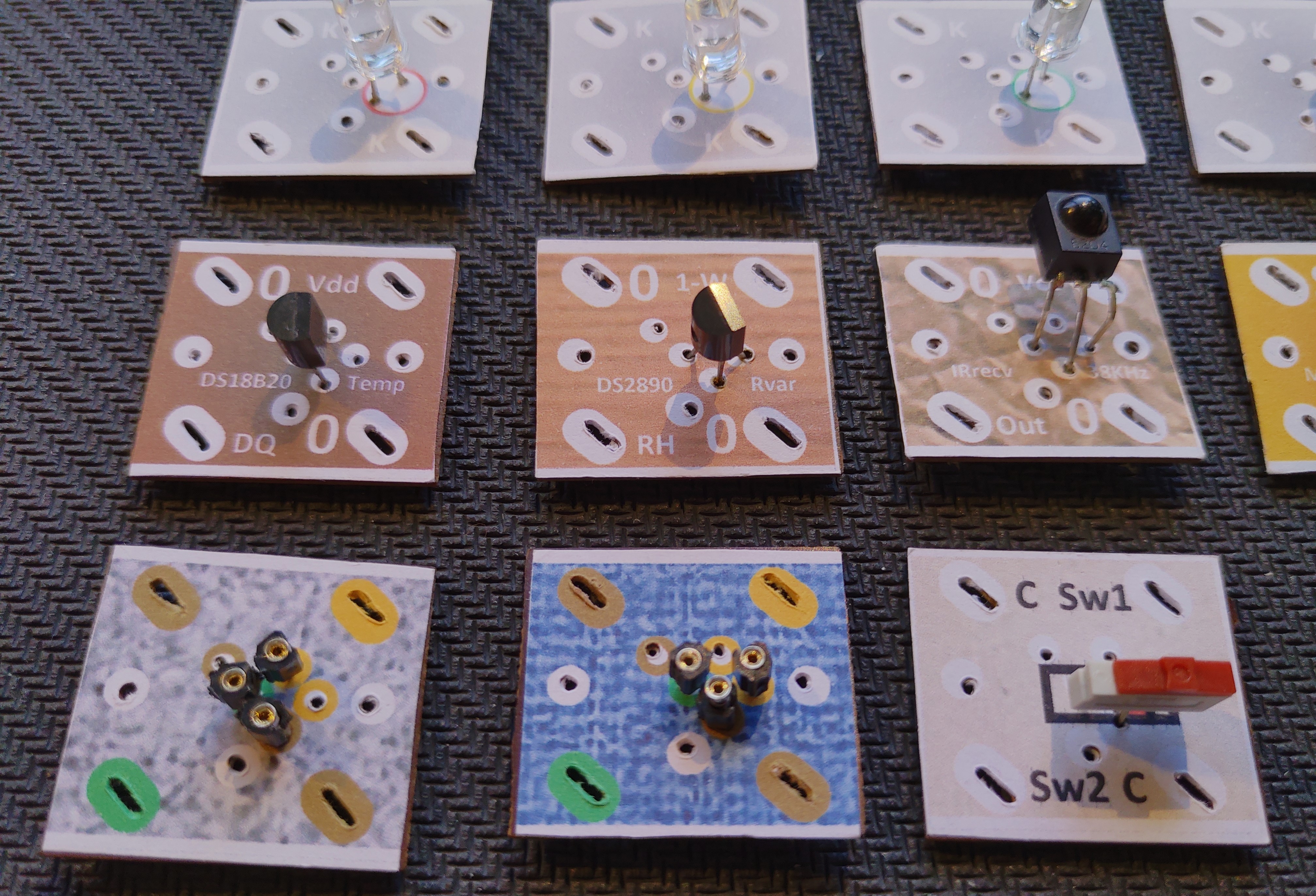As your Philips EE system starts to age, this often becomes apparent through the following two symptoms:
- The transistor PCB's are getting to look worn down
- you wish to use more modern and very useful components, like LDO's, the ZN414 / MK484 radio chip etc. etc. .
In those cases you may want to make these components mechanically suitable and having the appearance (again) of a new Philips EE component. For that reason I developed a MS-PowerPoint file with templates for stickers with the following very typical Philips EE look:
Please feel free to download the PPT file below and make your own adaptations as you see fit. The file contains also a few hints on how to print properly (scaling need, type of sticker paper etc.). Apart from a pair of scissors, a small, very sharp cutting knife is useful here too ... .
Note: The current file is only an early, draft version, but I intend to extend it with more designs, including those for the standard Philips EE ones.
Link to the file (draft v1): Philips EE Sticker PPT
As a final step, a fixative layer has to be sprayed (in several steps) to protect the printed layer from being damaged in use (as I experieced myself). For this I have used an acrylate-based spray used for protecting sensitive artwork called "Fixatief" from Van Beek Artsupplies. I applied it six times in total, with a 15 mins drying period in between. In the process I covered a few critical components (LEDs, etc) with a tissue/foam to avoid it being in contact with the spray.
Here follows an impression of my application of the stickers, mainly to integrate new components in the Philips EE system as "lookalikes", showing that this works really well.
In the picture below, most of my updates are shown:
Some of these are oriented for HF-applications, like the popular ZN414/MK484 AM radio detector chip. I also appeared to still have a double varicap (BB212) for AM applications, which in some applications is useful as a replacement for the variable capacitor.
Since I use the Philips EE system also for newer, microcontroller oriented applications as well, I put some key components on a transistor board too, like a RGB LED, a switch, MOSFET's, a digital temperature sensor (DS18B20) etc.:
